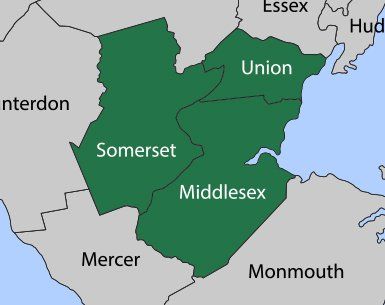Composting at Home
Composting is a natural process where organic materials decompose and are recycled into a dark, crumbly, earthy smelling soil conditioner known as "compost". Compost improves soil structure and moisture retention and contributes to healthy plant growth by providing plant nutrients. Food scraps and yard waste together currently make up more than 30 percent of what we throw away and could be composted instead. Making compost keeps these materials out of landfills where they take up space and release methane, a potent greenhouse gas.
Composting requires three basic ingredients:
- Browns- materials such as dead leaves, branches, and twigs. They provide carbon for the composite.
- Greens- materials such as grass clippings, vegetable waste, fruit scraps, and coffee grounds. They provide nitrogen for the composite.
- Water- the right amount of water. Helps provide moisture to help break down the organic matter.
Your compost pile should have an equal amount of browns to greens with alternating layers of organic materials of different-sized particles.
Keys to Good Compost
Water: The microorganisms in the compost pile need water to live. Water pile only as needed, to maintain compost as moist as a wrung out sponge. Do not let your pile dry out completely.
Nutrients: The microorganisms in the pile need carbon for energy and nitrogen for protein in order to survive. A good balance can be achieved by mixing two parts of nitrogen rich green materials such as grass clippings, with one part of carbon rich brown materials such as leaves. However, carbon-rich leaves by themselves will compost.
Aeration: To speed up decomposition, turn the pile frequently using a pitch fork. This provides the microorganisms with enough oxygen to thrive so they can heat up the compost. Placing large branches at the bottom of the pile will also help add air to the pile. Minimal turning would be once per month and less frequently during the year.
Surface area: The more surface area the microorganisms have to work on, the faster materials will decompose. Consider chopping materials, particularly brush or branches which have a diameter of ¼ inch or more. Pile size is also important. For quicker decomposition, pile should be at least 3 feet x 3 feet to hold the heat of microbial activity, but not so large (larger than 5 feet x 5 feet) that air can't reach microbes at the center of the pile.
How to Compost at Home
- Types of Compost Bins
- Compost can be made on open piles. Using homemade bins from wood pallets or snow fences
- Compost Tumblers or Durable Plastic Bins are other great option to use if you do not have the space in your yard.
- Composting Methods
- Slow Harvest: Ready in 12-18 months (Open piles)
- Made by adding layers of available yard waste over several months.
- Set compost in a dry, shady area near a water source or available for rain
- Add brown and green making sure larger pieces are chopped or shredded.
- Moisten dry materials as they are added.
- As the compost pile is established, mix grass clippings and green waste into the pile and bury fruit and vegetable waste under 10 inches of compost materials
- Regularly mix/turn the compost pile and add some water to help maintain the compost. The material at the bottom and in the center will compost first.
- Fast Harvest: Ready in 5-15 weeks
- Mix equal weights of green and brown materials all at once
- Grass Clippings or vegetable scraps mixed with brown materials such as leaves (no woody-type materials should be included)
- Add water to pile until it is as wet as a wrung out sponge
- Turn pile with pitch fork or compost aerator tool twice a week for faster compost production (less often in the wintertime)
- Slow Harvest: Ready in 12-18 months (Open piles)
Benefits/Use of Composting
- Uses
- Mulch: Spread compost around flower and vegetable plantings, trees, shrubs, and on exposed slopes. This will smother weeds, keep plants roots moist, and prevent soil erosion
- Soil Conditioner: Mix 1-3 inches of compost into vegetable and flowers beds before planting. This returns organic matter to the soil in a usable form
- Potting Mix: Make your own mix by using equal parts of compost and san or soil. Make sure compost is fully decomposed and screened
- Benefits
- Enriches soil, helping retain moisture and suppress plant diseases and pest
- Reduces the need to chemical fertilizers
- Encourages the production of beneficial bacteria and fungi that breaks down organic matter to create humus, a rich nutrient-filled material
- Reduces methane emissions from landfills and lowers your carbon footprint
- Improves soil structure and texture
- Increases aeration and water holding
- Stimulates healthy root development
- Reduces chemical inputs
- Reduces the volume of garbage going to landfills, transfer stations, and incinerators
- Helps the environment
- Quick and fun way to do part for the environment
Compost ingredients: What to Compost and not to Compost
- What to Compost
- Vegetable food scraps
- Grass clippings
- Eggshells
- Tea Bags
- Coffee grounds and filters
- Leaves
- Flowers
- Nut shells
- Shredded newspaper
- Sawdust and wood ash
- Yard trimmings
- Houseplants
- Hay and straw
- Chopped twigs and branches
- What not to compost and why
- Dairy products (Butter, milk, sour cream, yogurt and eggs*
- Create odor problems and attract pests such as rodents and flies
- Diseased or insect-ridden plants
- Diseases or insects might survive and be transferred back to other plants
- Fats, grease, lard, or oils
- Create odor problems and attract pests such as rodents and flies
- Meat or fish bones and scraps
- Create odor problems ant attract pests such as rodents and flies
- Pet wastes (dog or cat feces, soiled cat litter)
- Might contain parasites, bacteria, germs, pathogens, and viruses harmful to humans
- Yard trimmings treated with chemical pesticides
- Might kill beneficial composting organisms
- Coal or charcoal ash
- Might contain substances harmful to plants
- Black walnut tree leaves or twigs
- Releases substances that might be harmful to plants
- Dairy products (Butter, milk, sour cream, yogurt and eggs*
Few Troubleshooting tips: Some suggestions on how to solve some problems if they occur:
- Pile has rotten odor
- Not enough air
- Turn Pile
- Not enough air
- Pile has ammonia odor
- Too many greens
- Add brown material like leaves/straw
- Too many greens
- Pile is dry
- Not enough water, too much woody material
- Turn and moisten; add fresh greens
- Not enough water, too much woody material
- Low pile temperature (pile is not composting)
- Pile is too Small
- Add new materials
- Insufficient moisture
- Add water
- Poor aeration
- Turn pile
- Lack of nitrogen
- Mix in greens like grass of food scraps
- Cold weather
- Insulate pile with layers of straw or cover with tarp
- Pile is too Small
- Pests (rats, raccoons, insects)
- Presence of meat or fatty food scraps
- Remove from pile
- Presence of meat or fatty food scraps

